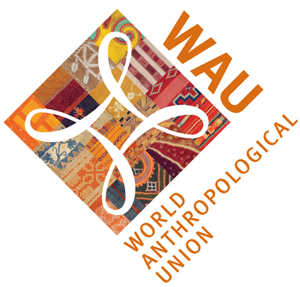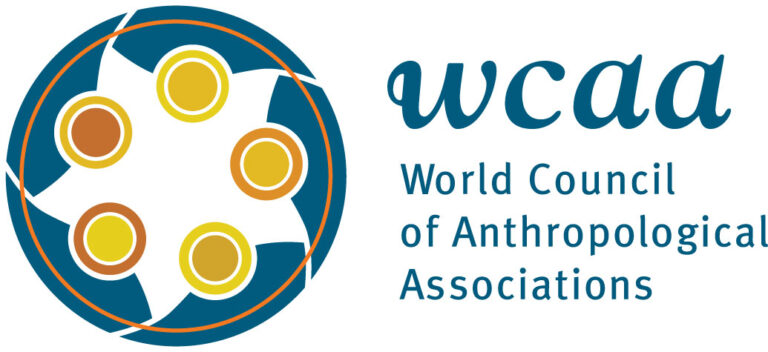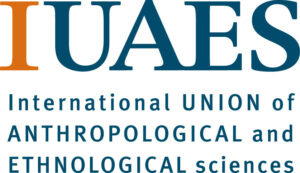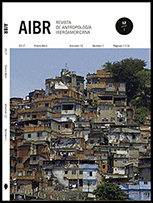
Ruiz, Gabriel. 2017. “Tres veces en la plaza: Escenificación de una ceremonia estatal de perdón público por actos de violencia paramilitar en Colombia (Three times at the square: staging of a ceremony of State public apology due to the acts of paramilitary violence in Colombia).” AIBR, Revista de Antropología Iberoamericana 12(1): 9-29.
The acts of armed violence can pour a new sense over the spaces where a community build its social identity. In Nueva Venecia, a small pile-dwelling village in Magdalena (Colombia), three different armed actors (the guerrilla, the right-wing paramilitaries and the Public Force) gathered the local people, at three different times, on the same social space: the main square. In the first meeting, people was warned, by the first one of the three groups, about the possibility of a slaughter that could happen there. In the second occasion, local people was both victim and witness of the way that the second one carried it on. In the third meeting, the third group offered excuses for what happened. The paper analyses the way in which these three acts determined three marks of the continuum of violence over the local nodal space of memory. The article is organized around the last act, when national Army and Police representatives organized a public ceremony of forgiveness because of the paramilitary massacre. The study of such a ceremony shows it as a stage where agents of confronting memories are trying to achieve social legitimacy rather than a true act of symbolic reparation.
Los actos de violencia armada tienen la capacidad de resignificar los espacios alrededor de los cuales una comunidad ha construido su identidad social. En el pequeño poblado palafito de Nueva Venecia (Magdalena-Colombia), tres distintos actores armados (la guerrilla, los paramilitares de extrema derecha y la fuerza pública colombiana) convocaron a la población, en tres distintos momentos, en el mismo espacio social: la plaza principal del pueblo. En la primera reunión, el primer grupo advirtió sobre la posibilidad de una masacre; en la segunda, los pobladores fueron víctimas y testigos de la forma en que el segundo grupo la ejecutaba; y en la tercera reunión, el tercer grupo ofrecía excusas por lo sucedido. El artículo analiza la forma en que estos tres actos determinaron tres marcas del continuum de la violencia sobre ese espacio nodal de memoria. El texto está organizado narrativamente alrededor del último de estos actos, cuando representantes del ejército y la policía colombianas ofician una ceremonia pública de perdón por la masacre paramilitar. El análisis de dicha ceremonia la revela más como un escenario donde los agentes de memorias enfrentadas despliegan dispositivos discursivos para legitimarse socialmente como un verdadero acto de reparación simbólica.

Espinosa, Mariana. 2017. “Misiones evangélicas, capitalismo y regulación estatal entre los guaraníes del Noroeste Argentino (Evangelical missions, capitalism and state regulation among the Guarani of the Argentine Northwest).” Revista del Museo de Antropologia 10(2): 193-205.
Evangelism among the Guarani of the Argentine Northwest is a subject of study scarcely explored that would be important to vitalize given its geographical scope, historical depth and contemporary socio-cultural effects. This article broadens and complements historical and ethnographic knowledge about the expansion of evangelical missions of British and North American origin among the Guarani, putting in evidence three moments of the missionary undertakings and their relationships with the State and the agro-industrial companies, between 1890 and 1980. It is mainly the search for understanding and explanation of the current map of evangelical Guarani churches that leads us to propose a long-term study on the genesis and transformations of the socio-cultural system organized by the expansion of evangelism among indigenous communities in the region. The article combines historical sources, ethnographic observations and pertinent bibliographical references.
El evangelismo entre guaraníes del Noroeste Argentino es un tema poco explorado que sería importante vitalizar dado su alcance geográfico, profundidad histórica e impacto socio-cultural contemporáneo. El presente artículo amplia y complementa conocimiento histórico y etnográfico sobre la expansión de misiones evangélicas de origen británico y norteamericano entre los guaraníes, evidenciando tres momentos de los emprendimientos misioneros y su relación con el Estado y los establecimientos agro-industriales, entre 1890 y 1980. Es principalmente la búsqueda de comprensión y explicación del actual mapa de iglesias evangélicas guaraníes lo que nos lleva a plantear un estudio de larga duración sobre la génesis y las transformaciones del sistema socio-cultural organizado por la expansión del evangelismo entre comunidades indígenas de la región. El desarrollo del artículo combina fuentes documentales, observaciones etnográficas y un sistema de referencias bibliográficas.

Sato, Wakana (佐藤若菜). 2014. “Sympathetic Relationships between Miao Mothers and Daughters as Mediated by Ethnic Costumes: Case Studies from Guizhou Province, China. (衣装が つ な ぐ母娘の 「共感的」関係––中国貴州省 の ミ ャ オ 族 に おけ る 実家 ・婚 家 間の 移 動 とその 変容).” Japanese Journal of Cultural Anthropology (文化人類学) 79(3):305–327.
Keywords: race; racism; Unesco; anthropology; history of science; Statement on race
キーワード:母娘関係, 「共感的」関係, 民族衣装, ミャオ族, 中国
In this paper, I propose that mother-daughter relationships in the patrilineal kinship system among the Miao, especially after the daughter’s separation from her natal family, are constituted through material objects. The case study presented in this paper deals with Miao women in southwest China and their ethnic costumes, and focuses on changes that have taken place since the 1990s regarding the bride’s move from the natal to marital home. This paper also considers women’s changing affiliations from natal to marital families in marriages with patrilocal residence.
Until the 1980s, the Miao maintained a custom known as zuo jia, whereby a bride would continue to live in her natal home even after her wedding until becoming pregnant or reaching childbearing age. During the zuo jia period, the status of the bride was liminal, and her affiliation was ambiguous. After living in the natal home for a few years, a bride would move to her marital home along with her costumes, typically indicating the start of her affiliation with her marital family. Among the Miao in L village, my field site, Zuo jia had no longer been practiced since the 1990s. Nowadays, the bride’s residence in her husband’s house and her pregnancy begin immediately after her wedding. The major change among Miao since the 1990s is that a married woman now leaves her costumes with her mother in her natal home until her mothers’ death or her own second childbirth.
As a result, both mothers and daughters—each with their own perspectives and logic—support and create a situation in which the daughters’ affiliation with natal and marital families and the costumes’ possession between the mother and daughter remain ambiguous until the daughters finally take their costumes to the marital home. Furthermore, the ambiguous possession of costumes between mothers and daughters, which has emerged since the 1990s, in part replaces the ambiguous status of brides during the zuo jia period before the 1990s, which allows the separation of mothers and daughters to occur gradually over a long period.
In conclusion, I suggest that material objects such as the costumes handcrafted by mothers also constitute a “sympathetic” relationship between mothers and daughters which can be understood as a relationship based on “sympathetic magic” [Shimizu 1989]. That relationship is based on the mothers’ continuing involvement in their daughters’ lives through the daughters’ costumes, even after the daughters move to their marital homes. The daughters also continue to show their consideration for their mothers by leaving their costumes in their natal homes. The costumes mediate the mother-daughter relationship through the physical acts of wearing and handcrafting and through their value as prestige goods. Such a relationship has emerged in association with socioeconomic changes that have occurred since the 1990s. Here, the mother-daughter relationship is maintained and reinforced through continuing mutual consideration and attention manifested in the physical location and transference of the costumes. I suggest that such continued mother-daughter relationships cannot be taken for granted, especially when the women move from their natal families to their marital families. Such connections are created and reinforced by people’s practices, which can be accomplished through the mediation of such material objects as costumes handcrafted by mothers.
本稿は父系親族組織を特徴とする中国貴州省のミャオ族を事例に、その民族衣装を介して形成 される母娘関係について検討する。特に衣装の製作・所有・譲渡の様態と、婚礼後に見られる実家・ 婚家間での女性の移動パターンが、1990年頃を境に大きく変化した点に着目する。清水昭俊は、 親子の身体的・霊的要素の連続性からかつての接触や融合を想起することで繋がれる両者の関係 を、呪術的な性格をもつ「共感的な」関係と表現した。これに対し本稿では、現地の社会経済的 な変化とともに生起した母と娘との関係を明らかにすることで、この関係もまた衣装を介して「共 感的」に築かれたことを指摘する。
1980年代までミャオ族の女性は婚礼を挙げると 一 旦実家に戻り、数年滞在してから婚家での生 活を始めていた。新婦は実家での滞在を終え、婚家へと移動する際に衣装を持参していたのであ る。しかし1990年代以降、この実家での滞在期問は数日問に縮小され、新婦は早々と婚家での生 活を始めるか、夫とともに出稼ぎに出るようになった。その一方で、衣装を婚家へ持参する時期 は、その後の第2 子出産か実母の死去まで延期されるようになったのである。これにより娘が実 家を離れてもなお、衣装を介した母娘関係は持続するようになった。
以上の事例から、衣装がつなぐ母娘間の「共感的」関係は、身体的・霊的要素によって内在的 に親子の間に存在したのではなく、むしろ現地の社会経済的な動態を背景に築かれたことを示す。 すなわち、衣装の価値の高まりと、実母が娘の衣装を製作するというサイクルの普及、および婚 姻の変化によって、衣装は既婚女性の(実家ないし婚家への)帰属に働きかけるものとなった。 これにより、母親が娘のために製作した衣装をめぐって母娘間に新たな所有の関係が生まれ、そ こに娘の婚家への移動過程の変化を反映した意味づけがなされたことにより、1990年代以降、衣 装を介した母娘の「共感的」関係が動態的に生起したことを指摘する。
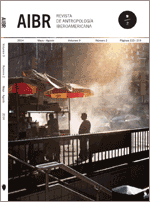
Martos, Juan Antonio Flores. 2014. “Iconografías emergentes y muertes patrimonializadas en América Latina: Santa muerte, muertos milagrosos y muertos adoptados (Emerging Iconographies and Patrimonized Deaths in Latin America: Holy Dead, Miraculous Dead and Adopted Dead).” Revista de Antropología Iberoamericana 9(2):115–140.
Cultural heritage, emerging cults, violence, Holy Death, miraculous dead
Palabras clave: Patrimonio cultural, cultos emergentes, violencias, Santa Muerte, muertos milagrosos
Ethnographically, I explore imaginaries in Latin American societies where death has a role and relevant agency; as well as its connection to some figures and emerging cults that claim to embody death as a self possession and heritage. From the Santa Muerte in Mexico, I will make a comparison to the processes of cultural patrimonialization of the death in other American societies. I focus the manufacture of miraculous dead―folk saints― in cemeteries, and the processes of “adoption” of Colombia’s violence victims of unknown dead citizens―called dead NNs―. These emerging cults connected with the experience of its practitioners to take control of their lives in a precarious state of social vulnerability, homeless state institutions and formal structures. These are considered as “walking dead” who enjoy a very good health.
Exploro etnográficamente unos imaginarios en sociedades latinoamericanas donde la muerte tiene un protagonismo y agencia relevante y su conexión con unas figuras y cultos emergentes que pretenden encarnarla como un bien y patrimonio propio. A partir de la Santa Muerte en México, se establece un contraste comparativo con los procesos de patrimonialización cultural de la muerte en otras sociedades americanas: manufactura de muertos milagrosos –santos populares– en cementerios, y procesos de elección y de «adopci��n» de muertos anónimos víctimas de la violencia en Colombia –los llamados muertos NN–. Estos cultos emergentes se conectan con la experiencia de sus practicantes de tomar el control de sus vidas en un precario estado de vulnerabilidad social, desamparados de instituciones estatales y estructuras oficiales. Unos «muertos vivientes» que disfrutan de buena salud.
Oba-Smidt, Chikage. 2013. “The Structure of "History" among People without Writing: An Analysis of the Boorana Oral Chronicle in Southern Ethiopia.” Japanese Journal of Cultural Anthropology 78(1):26–49.
Keywords: Perceptions, cremation, traditional beliefs, Zulu people, alternative burial system
In this paper, I describe how people without a writing tradition preserve and construct their own history, based on a research on the Oral Chronicle of the Boorana in southern Ethiopia. The Boorana has a socio-political institution based on generation sets called gadaa. It has eight generation sets. Boorana choose their leader from the 6th generation set. This leader called abbaa-gadaa bears the main responsibility for politics and ceremonies during the eight years during which he belongs to the gadaa generation set. There were 70 abba-gadaa until now according to the Oral Chronicle. Boorana can memorize all the names of the abba-gadaa of the past, and narrate events, which are said to have happened in the time of each abba-gadaa. I focus on the concept of maq-baasa, which was frequently used by narrators. Here, I describe the law of history which Boorana believe in, which can be illustrated by the discourse of the maq-baasa. The maq-baasa are the “given names” of the abba-gadaa. There are seven “given names” and each name is, in Boorana imagination, linked with a specific destiny such as conflict, disaster or peace. Seven maq-baasa names are to be given to the different abba-gadaa in a cyclical order. 3 The Boorana believe that all events happen according to the regular cycle of the maq-baasa names and the destinies linked to them, given to each abba-gadaa. I document such a way of thinking about the laws of history through an analysis of several historical narrations which mention the cycle of maq-baasa. This structure is used to construct Boorana history, which shows the important role of specific structures for memorizing history. In the conclusion, I point out three perspectives on the structure of historical memories, which Boorana use. First, there is a correlation between historical memories and the maq-baasa cycle. The maq-baasa cycle has the role not only for constructing history but also for determining which events shall be memorized or not. Second, on the other hand, the same memorizing system produces different histories, thus different versions exist among Boorana. They sometimes even create historical memories in order to apply them to the maq-baasa cycle. Third, the view on history as being controlled by the maq-baasa cycle constructs not only the history of the past, but also the present and the future. The Boorana try to foresee the future according to the laws of history. Even accidental events will thus be involved into the cyclical historical program.

Morel, Hernán. 2013. "BUENOS AIRES, MECCA OF TANGO: ACTIVATION PROCESSES, MEGA CULTURAL EVENTS, TOURISM AND DILEMMAS IN THE LOCAL HERITAGE." Revista PUBLICAR en Antropología y Ciencias Sociales 15: 55-74.
In this paper, we go through the history of the construction of tango as heritage. The period analyzed here begins in the late 90's and extends until 2010. We analyze the factors underlying the cultural policies that came to surface after the "turn" of tango as heritage in Buenos Aires, that is to say, after the activation and promotion of this popular genre on part of the political power (Morel 2009). Through a process analysis, we outline the official efforts behind this recognition. Simultaneously, we examine the impact of tourism as a decisive factor in the political-cultural approaches of the successive administrations. Our aim is especially focused on two main aspects: first, we highlight the heritage-driven policies that went along with the activation process of this genre, and, secondly, we note the consolidation of the cultural policies and actions which had to do, mainly, with the organization of tango events in relation to the promotion of tourism in the city. Under this framework, we explore the negotiations and disputes which, later on, led to the creation of the Buenos Aires Tango Festival and its institutionalization within the official cultural program.
Keywords: political heritage, festivals, tourism, tango
Markus Verne (2013). The Limits of Contextualism. Malagasy Heavy Metal, "Satanic" Aesthetics, and the Anthropological Study of Popular Music. déjà lu Translations (2013)
This article was first published in 2012 in German in the Zeitschrift für Ethnologie 137 (2), pp. 187-206. The original is not available on-line. It was chosen by the German Association of Anthropologists as the most appropriate article for republication in déjà lu. They requested its author to translate it into English, which he has done. We are honoured to open the section "déjà lu Translations" with this publication.
Keywords: sociology of morals, agency, accounts, effectuation
During the last fifteen years or so, the study of popular music has increased in popularity within the field of anthropology. Theoretical approaches are however, only rarely concerned with aesthetics, with the ways in which music is experienced and with its relation to everyday life. Instead, explanations focus on the social, historical and political contexts in which popular music is performed, echoing the way in which popular music is dealt with in critical theory and cultural studies. Drawing on ethnographic research on heavy metal in the highlands of Madagascar, this article attempts to point out the shortcomings of these contextualist approaches by taking aesthetic experience as the point of departure for the study of popular music. Showing how during fieldwork in Madagascar’s capital Antananarivo, Satan emerged as an allegory that served both metal fans and musicians as a means to express their aesthetic experiences and to further reflect upon the music’s unique character, the article argues that the anthropological study of popular music needs to refocus on its own traditional methodologies – long-term participant observation, above all – in order to no longer neglect music’s most central aspect: its ability to deeply move us. Keywords: anthropology of music, popular music, aesthetics, heavy metal, Madagascar

Ferrández, Luis Fernando Angosto (2012). The Omnivorous Science: Jean and John Comaroff on the Politics of Anthropology, Capitalism and Contemporary States. AIBR Revista de Antropología Iberoamericana, Vol. 7 (3), pp.271 – 296.
Keywords: Jean Comaroff, John Comaroff, Culture, Omnivorous science
Few social scientists reach the status of contemporary classics. Jean and John Comaroff are among those who could be included in that category. Their current work is indeed on the crest of the wave of social analysis, but at least since the 1980s it has been followed, debated and also challenged within the field of anthropology. Beyond this disciplinary area, their work has resonated and continues to resonate in the spheres of sociology, politics and legal studies, in a clear demonstration of the strength and the potential of anthropological knowledge when it engages the ‘big issues’. It is only a part of the written production of John and Jean Comaroff that has been translated into Spanish, but contemporary Spanish and Latin American anthropologists are familiar with many of their theoretical proposals. Here is an opportunity to gain insight into these proposals and into the views of the Comaroffs on the politics of anthropology, capitalism and contemporary states. This interview was conducted in Sydney (Australia) on 08 May 2012. I should like to thank Jeremy Beckett for comments on the interview transcript.

Gourarier, Mélanie. 2011, "Négocier le genre? Une ethnologue dans une société d’hommes apprentis séducteurs (Negotiating Gender? An Ethnologist Works Embedded in a Society of Men Apprenticing Seduction)." Le Journal des anthropologues n°124-125, p.159-178.
Keywords: sex/gender, reflexivity, masculinity, negotiation, field, seduction
A young woman researcher had particular experience while conducting a study on an exclusively male population. Starting from there, the article questions the functions of the gender assignments endowed upon the researcher during her study, in order to fully integrate them into the process of understanding the data. The reflexivity analysis done concerning the researcher’s working path in the field hence allows approaching the upward hierarchic mobility system based on the progressive acquisition of “male skills,” a system which has structured the career path of the individuals within the reference group. In such a context, where gender identity is constructed, assignments to which the researcher is confronted depending on his or her gender make room for negotiation and proper organization of the study.
